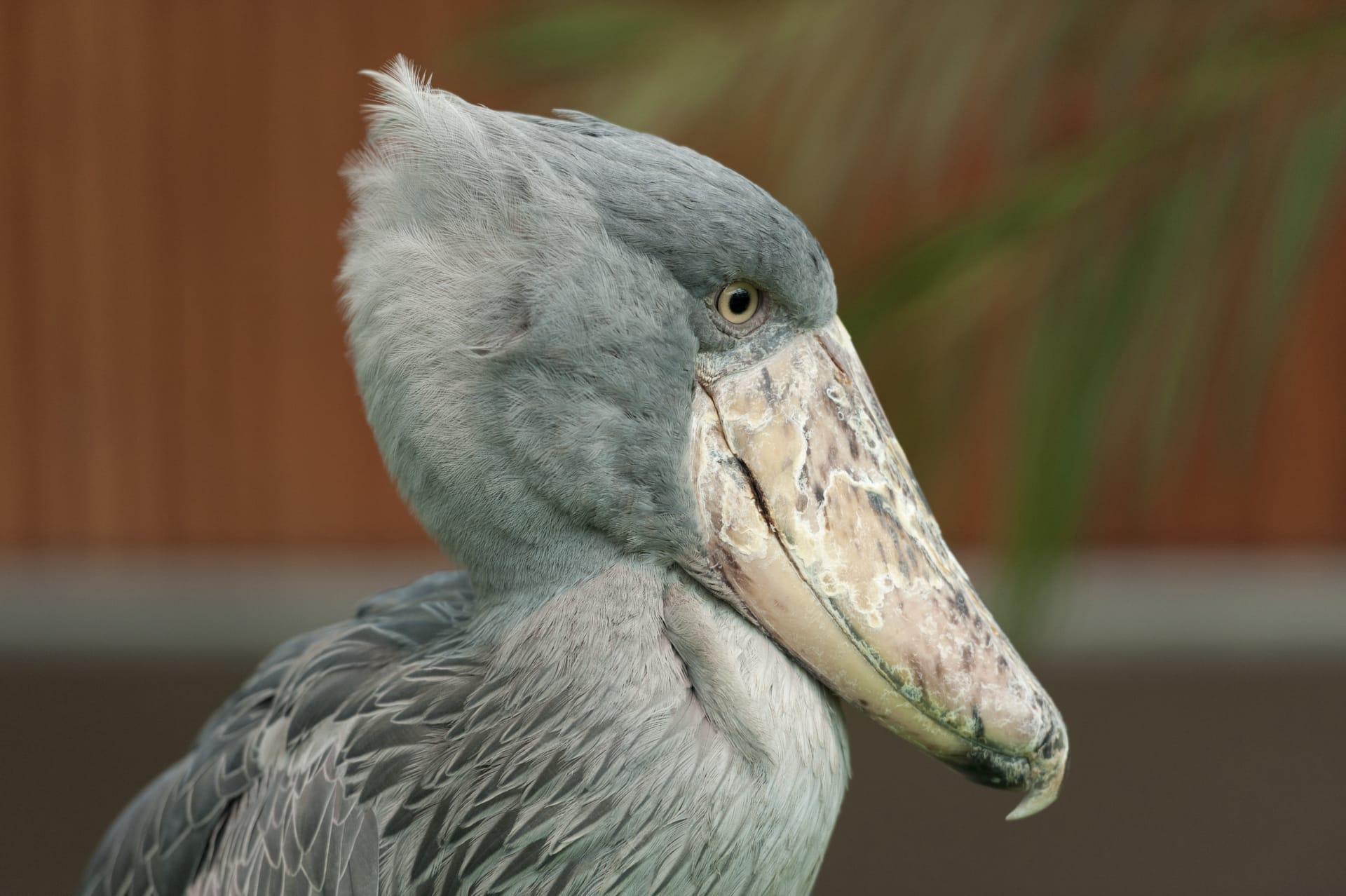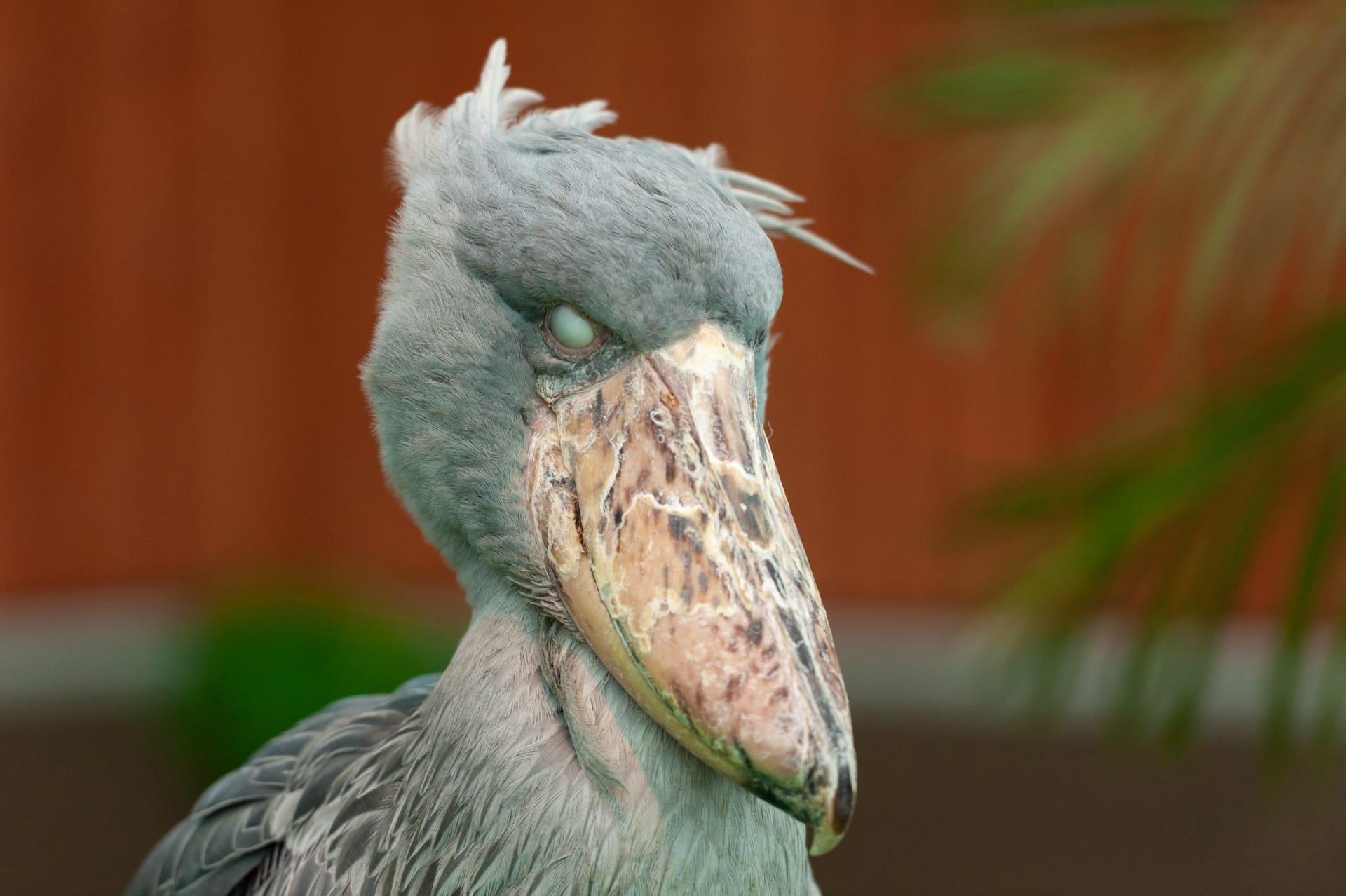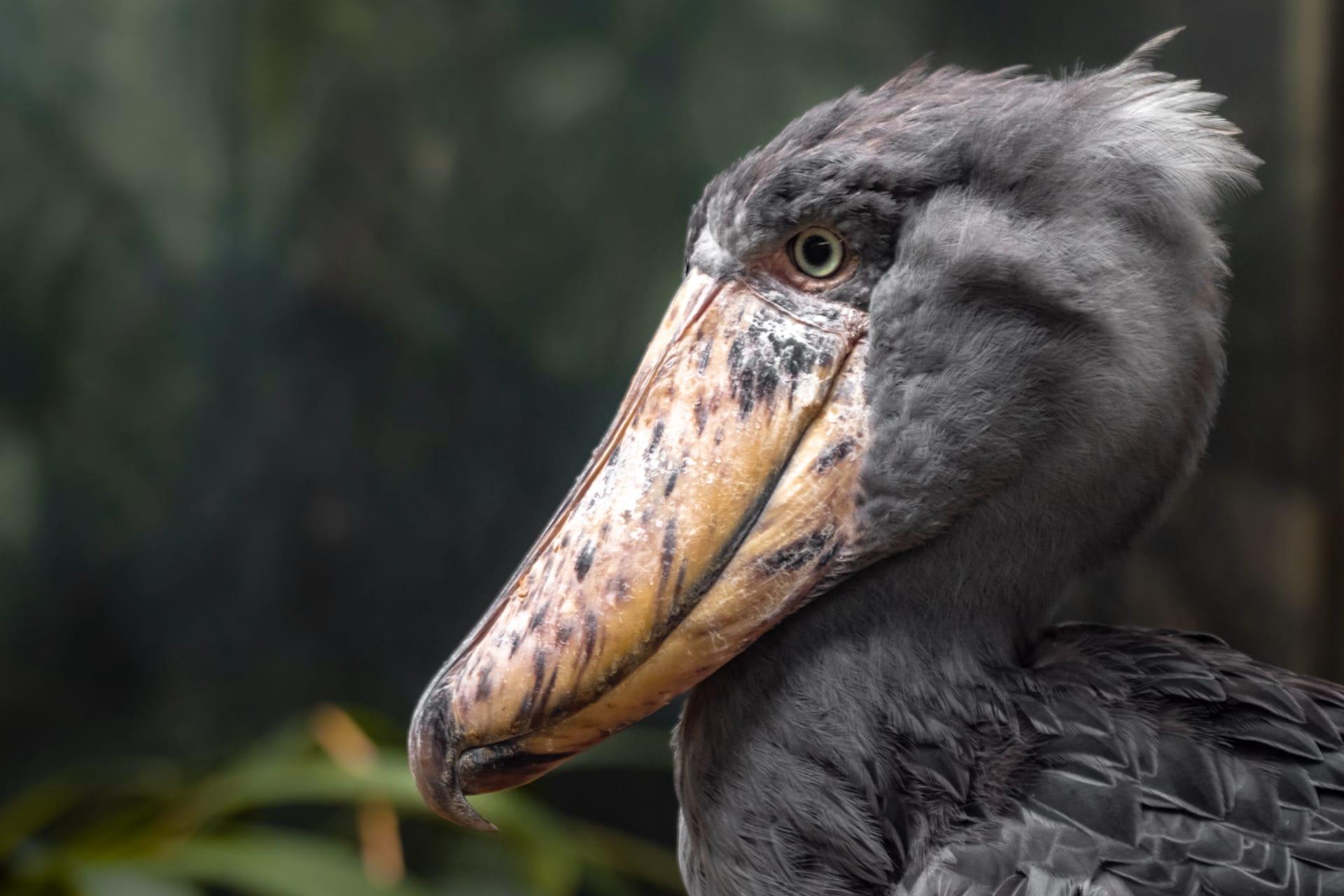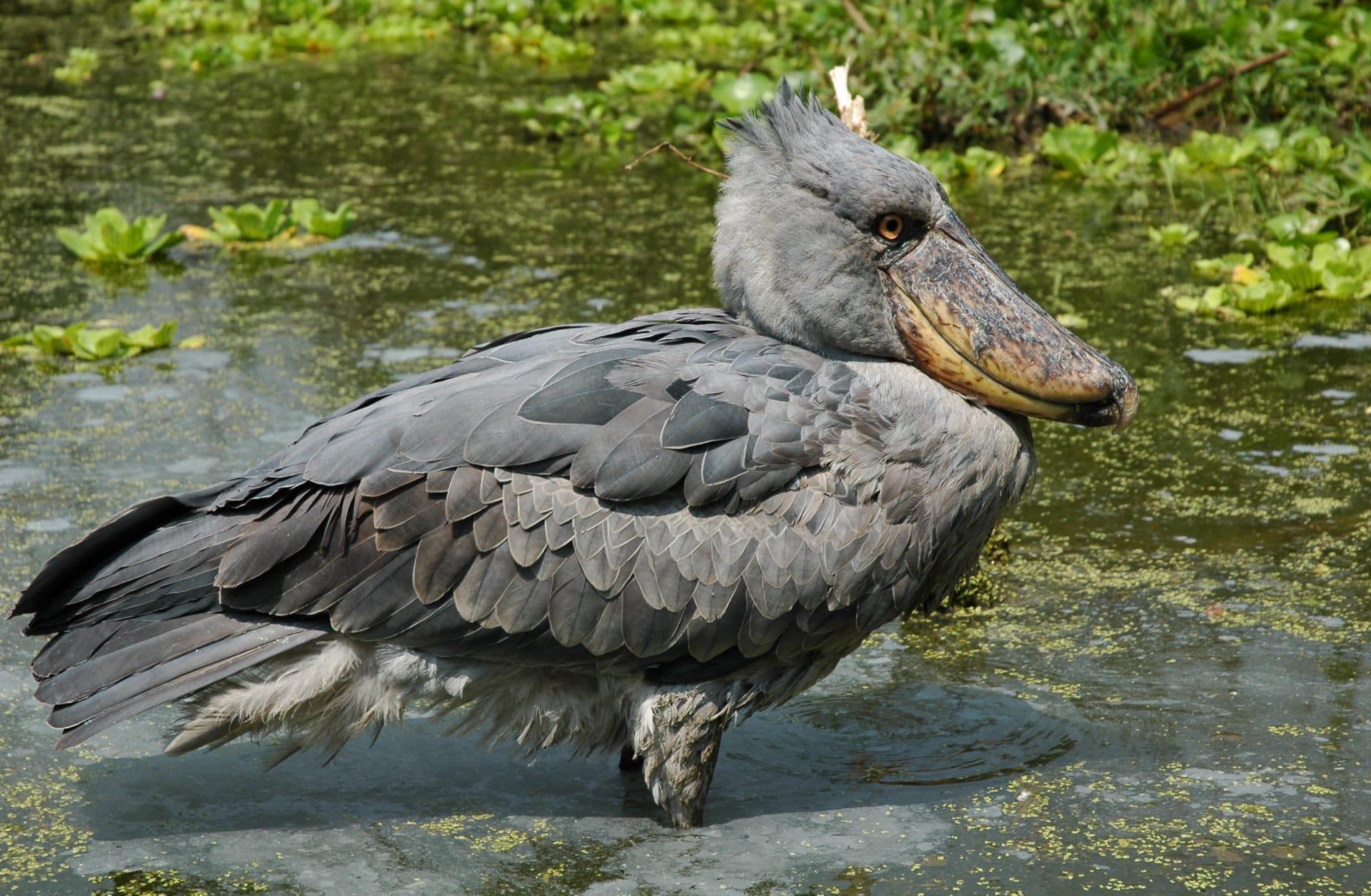Shoebill Characteristics
- Home /
- Mini Encyclopedia /
- Animal /
- Shoebill Characteristics
1
The Shoebill, a striking bird native to East Africa, boasts an impressive stature with a height ranging from 110 to 140 centimeters and a wingspan extending up to 260 centimeters. Weighing between 4 to 7 kilograms, they are indeed formidable. A fascinating aspect of the Shoebill is its longevity, with a lifespan that can stretch up to 35 years in the wild, a testament to its resilience.
One of the Shoebill's most distinctive features is its massive bill, resembling a Dutch wooden shoe, which spans about 20 centimeters in length and 10 centimeters in width. This bill is not just for show; it's a highly effective tool for hunting. Equipped with sharp edges, the bill is perfect for catching and decapitating their primary prey, mainly lungfish and sometimes even baby crocodiles.

2
Question: Why do Shoebills stand motionless for long periods?
Answer: Shoebills, known for their statue-like stillness, adopt this behavior as a hunting strategy. By standing motionless, often for hours, they blend into their swampy habitat, becoming almost invisible to unsuspecting prey. This stealth approach, coupled with their excellent binocular vision, allows them to strike swiftly and accurately, catching fish and amphibians with remarkable efficiency.

3
Shoebills are characterized by their unique movement style. In their swampy homes, they walk with deliberate, measured steps, carefully navigating through water and vegetation. This cautious gait helps them to maintain balance and avoid startling prey.
When hunting, Shoebills demonstrate remarkable patience and precision. They typically target lungfish, which they catch using a swift, downward strike with their powerful bill. The bill's sharp edges are perfectly designed for this, ensuring a quick and effective capture. Their hunting technique is a combination of waiting, watching, and a sudden, explosive action.

4
The Shoebill predominantly resides in large freshwater swamps and dense marshes in East Africa, such as those found in Uganda, Sudan, and Zambia. These habitats provide the perfect blend of shallow waters and abundant fish, crucial for their survival.
In terms of reproduction, Shoebills are solitary nesters. They build large, platform-like nests out of vegetation, usually in dry parts of the swamp. A typical clutch consists of one to three eggs, with both parents involved in the incubation process, which lasts about 30 days. The chicks are then cared for by the parents for several months, learning to hunt and survive in their challenging environment.

5
Book: "Wings in the Swamp: Secrets of the Shoebill" by Richard King, published in 1998 in the United Kingdom. This book offers an in-depth look into the life and habits of the Shoebill in its natural habitat. King's vivid descriptions, backed by years of field research, provide insights into their behavior, diet, and the challenges they face in the wild.
Book: "The Silent Stalker: Understanding the Shoebill" by Sarah Jensen, released in 2005 in the United States. Jensen's book is a comprehensive guide to the biology and ecology of the Shoebill. It combines scientific research with engaging narratives, exploring the bird's unique characteristics, its role in the ecosystem, and conservation efforts dedicated to preserving this enigmatic species.